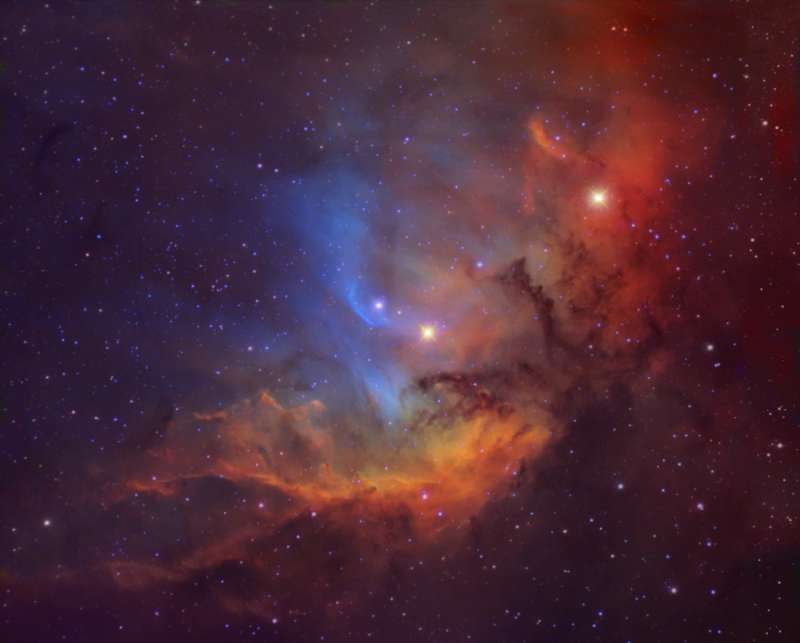Credit & Copyright: Michael Joner, David Laney (West Mountain
Observatory, BYU);
Processing -
Robert Gendler
Explanation:
Framing a bright emission region
this
telescopic view
looks out along the plane of our Milky Way Galaxy toward the
nebula rich constellation
Cygnus
the Swan.
Popularly called the Tulip Nebula the glowing cloud of
interstellar gas and dust is also found in the
1959 catalog
by astronomer Stewart Sharpless
as
Sh2-101.
About 8,000 light-years distant the nebula is
understandably not the only
cosmic cloud to evoke the imagery
of flowers.
The complex and beautiful nebula is shown here in a composite image that
maps emission
from ionized sulfur, hydrogen, and oxygen atoms
into red, green, and blue colors.
Ultraviolet radiation from young, energetic
O star HDE 227018
ionizes the atoms
and powers the emission from the Tulip Nebula.
HDE 227018, is the bright star very near the blue
arc at image center.
1999 2000 2001 2002 2003 2004 2005 2006 2007 2008 2009 2010 2011 2012 2013 2014 2015 2016 2017 2018 2019 2020 2021 2022 2023 2024 2025 |
Yanvar' Fevral' Mart Aprel' Mai Iyun' Iyul' Avgust Sentyabr' Oktyabr' Noyabr' Dekabr' |
NASA Web Site Statements, Warnings, and Disclaimers
NASA Official: Jay Norris. Specific rights apply.
A service of: LHEA at NASA / GSFC
& Michigan Tech. U.
|
Publikacii s klyuchevymi slovami:
Cygnus - emission nebula - tumannost' - emissionnaya tumannost' - Lebed'
Publikacii so slovami: Cygnus - emission nebula - tumannost' - emissionnaya tumannost' - Lebed' | |
Sm. takzhe:
Vse publikacii na tu zhe temu >> | |
